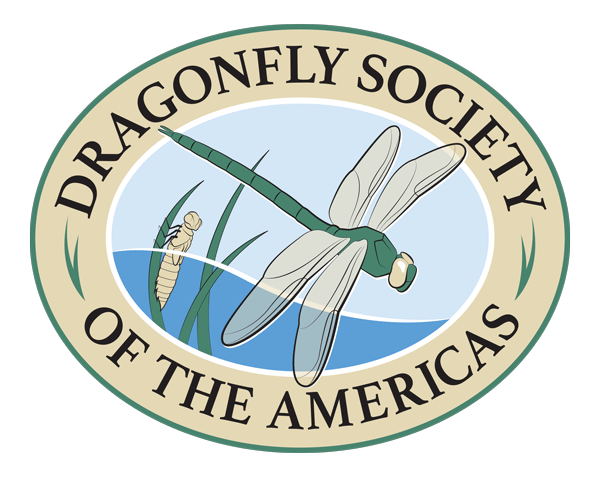July’s Featured Species: Calico Pennant (Celithemis elisa)
Male calico pennant (Celithemis elisa), Holland, OH. 7-5-2019 (Photo copyright Kim Smith).
The Dragonfly Society of the Americas July “Species of the Month” is the Calico Pennant (Celithemis elisa). It is in the family Libellulidae, commonly known as the skimmers, or perchers. It is a small skimmer, 29-34 mm in length (just over an inch to under an inch-and-a-half long), and is often found in ponds and lakes in the United States in a range that includes the East, Northeast (to Southeastern Canada), Southeast, Midwest, and West to Nebraska, Texas, and Oklahoma, according to Dennis Paulson in Dragonflies and Damselflies of the East. Enjoy hearing more about this species as you follow monitor Kim Smith on her adventures in Ohio.
The Love Dragons of North America
Calico Pennants are small skimmers (Libellulidae), the family with the most species among the Anisoptera, and a very common species in my area. Their usual habitats are ponds with calm water and lots of vegetation around the edges. Coincidentally, I favor those types of habitats as well and am well-acquainted with these charismatic little odonates.
Wiregrass Lake, Holland, OH. 9-15-2020 (Photo Copyright Kim Smith).
One of the first places I saw this species was a local Ohio metropark that consists primarily of a five-acre man-made pond used for fishing and kayaking. The pond edge is heavily vegetated with shrubs and forbs, surrounded by a wide grassy walking path around the lake. Outside the trail are a variety of woods and meadows. The park opened to the public in 2015, two years before I moved to this region, so I was never able to see it prior to then. A friend had access to the property to do unofficial surveys before it was opened to the public, and he tells me that he often saw mass emergence of calico pennants consisting of well over a thousand individuals.
Calico pennant (Celithemis elisa) on equisetum, Holland, OH. 7-13-2020 (Photo copyright Kim Smith).
The common name “calico” comes from the mottled markings on their wings, similar to those on the coat of a calico cat. This species is sexually dimorphic, with red markings on mature males and yellow on females and immature males. However, they are highly variable, as seen in the photo of a female with red pterostigma. I’m also pleased when I find a male who is partway through the process of changing colors, as shown in this gorgeous individual.
Calico pennant (Celithemis elisa) immature male with partial color change, Holland, OH. 5-16-2021 (Photo copyright Kim Smith)
Years ago I began to call them “love dragons” because of the heart-shaped markings on the abdomen. And, with that already in my mind, it’s not a big leap to imagine their mating wheel as a heart as well.
Calico pennants (Celithemis elisa) in heart-shaped mating wheel. Holland, OH 7-5-2019- (Photo copyright Kim Smith).
Typical pennant hunting behavior is to perch on a plant and launch at flying insects who pass by. As far as I know, dragonflies don’t have associations with any particular plants as many other insects do. But occasionally I’ll find one that has chosen a flower as a hunting perch, and I’m always in search of those prime photo opportunities.
Calico Pennant (Celithemis elisa) male on fleabane, Holland, OH. 6-30-2018. (Photo copyright Kim Smith).
Although there were once mass emergences here, things seem to have changed since the park opened nine years ago. I was an Odonata monitoring volunteer there for three years, from 2019 to 2021. My high single-day count of calico pennants was 37 individuals, and that number hasn’t been surpassed since I turned over the monitoring duties to a new team in 2022. A population drop from more than a thousand to 37? It’s a concern.
Calico pennant (Celithemis elisa) Holland, OH. 8-31-2020. (Copyright Kim Smith).
In recent years, there has been an increase in people racing remote-controlled boats and airplanes on and over the lake as well. But as far as determining the cause, your guess is as good as mine. Is it because they started stocking the lake with fish who may be eating the dragonfly larvae? Maybe. Is it a result of counting errors? I think this is doubtful in the case of such a huge change. Or is it just a natural fluctuation that happens over longer periods of time? I wish we knew the answers, but I’m glad that at least we’re keeping records now to better track population changes of all the Odonata that live here.
Calico pennant (Celithemis elisa) on black-eyed susan, Monclova, OH 7-1-2021. (Photo copyright Kim Smith).
The idea of this beloved dragonfly species disappearing is too sad to contemplate. I hope the population can somehow rebound. In the meantime, I’ll continue to enjoy these beautiful love dragons whenever I can find them.
Our guest blogger for July is Kim Smith, an Odonata enthusiast in Toledo, Ohio. Kim leads local field trips to share her love of dragonflies and writes about them at NatureIsMyTherapy.com. She recently served as the President of Toledo Naturalists’ Association and is on the board of the Oak Openings Region chapter of Wild Ones, a nonprofit that educates the public about the ecological importance of native plants. You can contact her at Kim@NatureIsMyTherapy.com.









